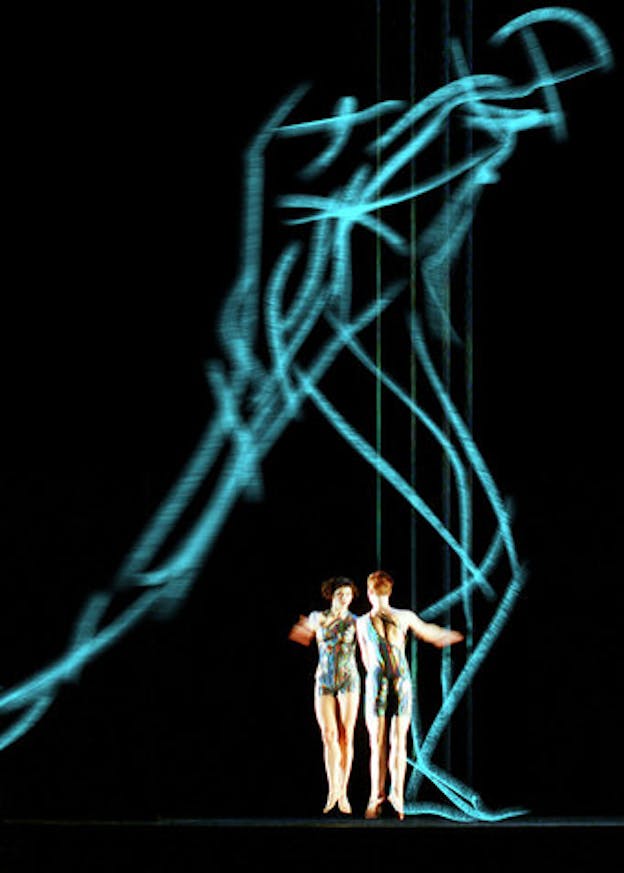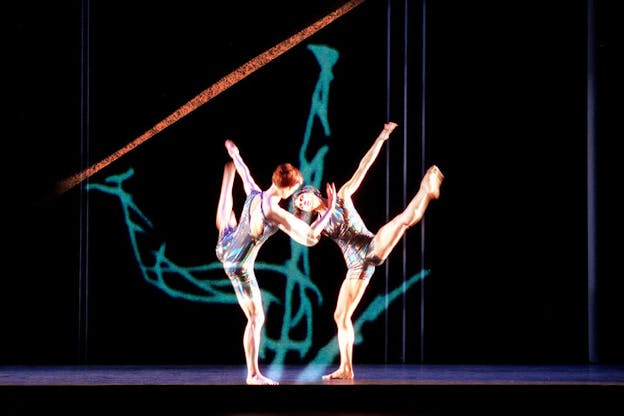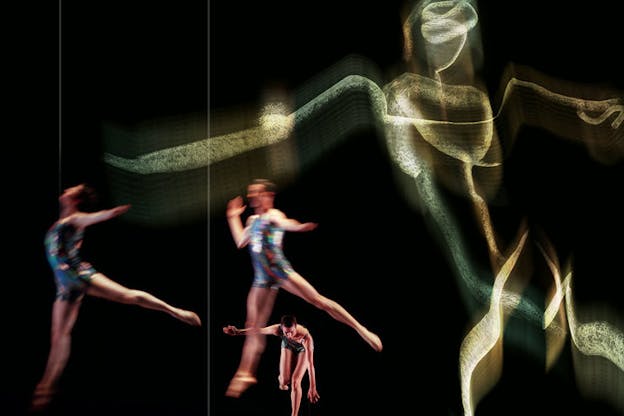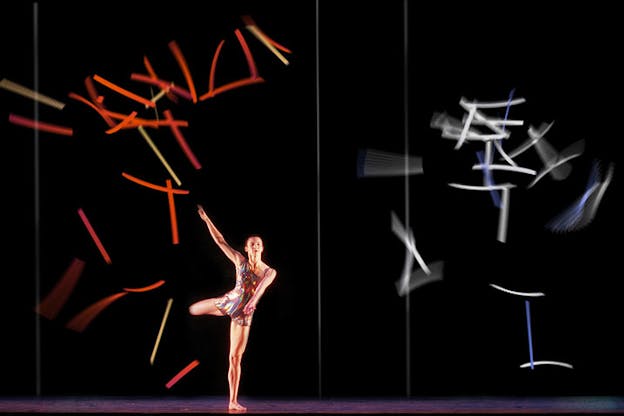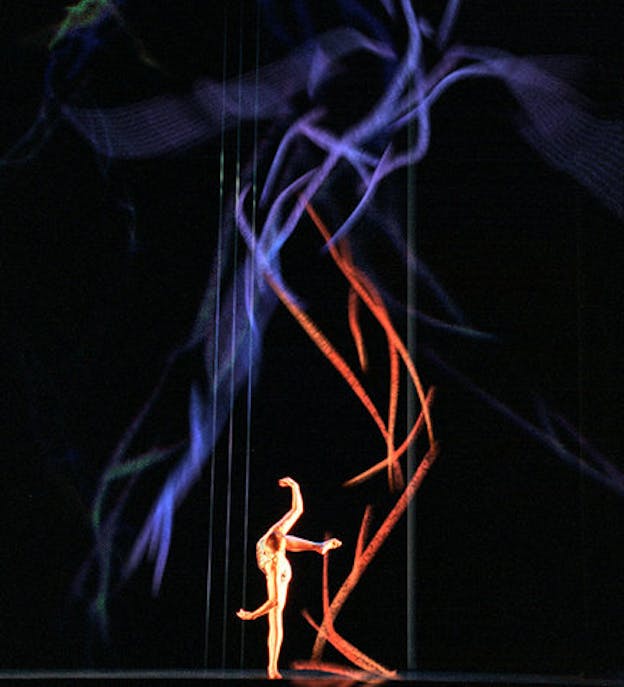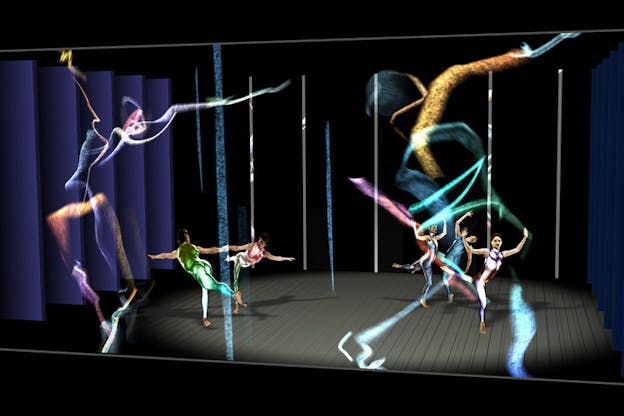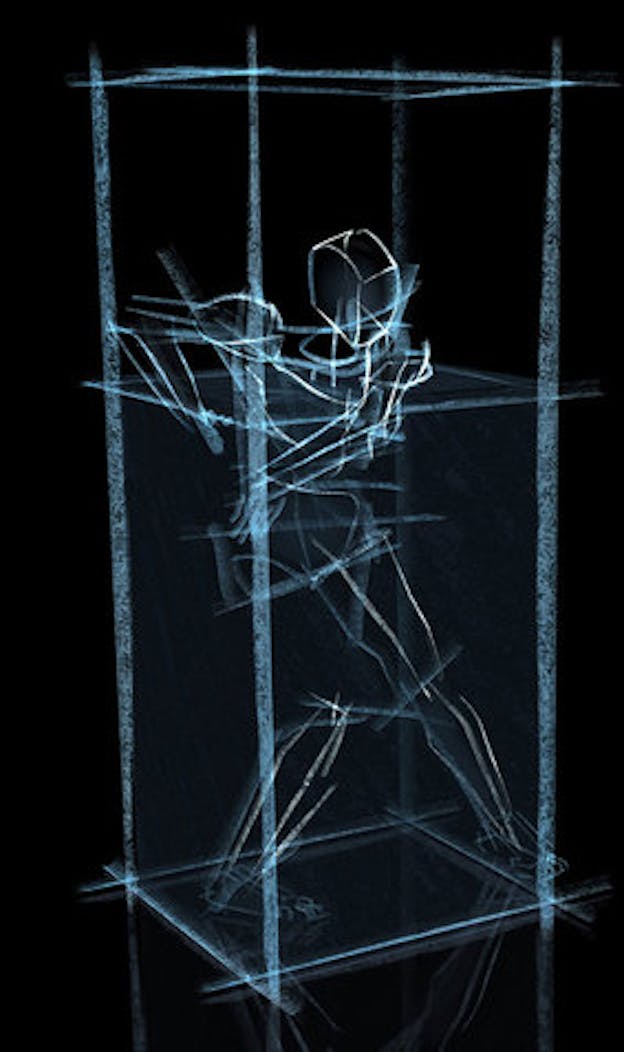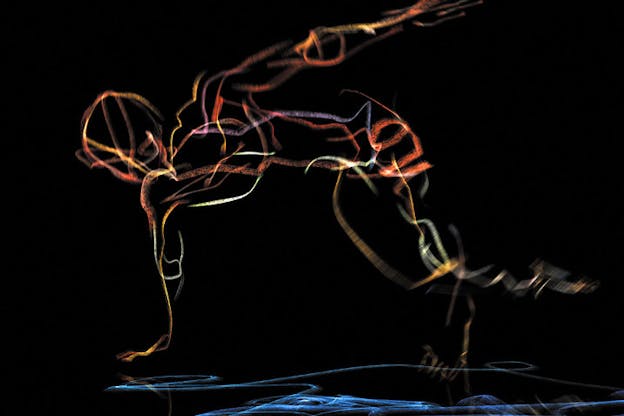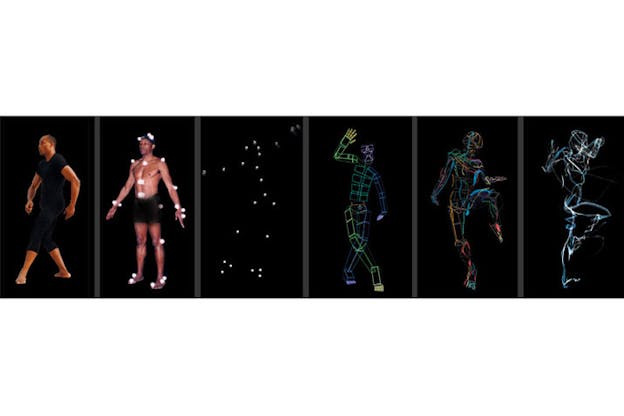Riverbed Media
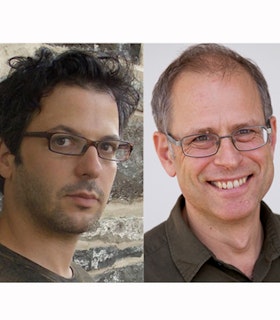
[Part of the funds] bought an LCD projector, traveling case, video amplifier, and spare bulbs for our Ghostcatching installation… The remaining funds were paid out in salary to both of us, allowing us to devote ourselves fully to revisiting and expanding our projections for Merce Cunningham's Biped (1999).
- Riverbed Media, May 17, 2000
Artist Statement
Shelley Eshkar
My work as a collaborator in digital art and experimental animation has often taken three signature turns: the capture of bodies and spaces in our world through sensors, lenses, and other means; the translation of this data into non-literal, expressive 3-D virtual worlds; and the presentation of these immersive works in as many contexts as possible outside the computer.
Since the late 1990s, this body of work has matured through interaction with many fine collaborators, notably Paul Kaiser and Marc Downie as part of OpenEndedGroup, and with our earliest encounters with choreographic legends Merce Cunningham and Bill T. Jones.
Paul Kaiser
My work arises from the years I spent teaching students with severe learning disabilities in the 1980s, with whom I made multimedia depictions of their own minds. It was from working with these students that I derived two key ideas— mental space and drawing as performance—which became the points of departure for much of the work I have pursued since then. What fascinates me above all is the awareness of consciousness: my own and that of others.
It was from these students that I also learned the value of collaboration, a practice central to my work ever since. Much of my work would be inconceivable without my current colleague Marc Downie (with me at OpenEndedGroup) as well as with Shelley Eshkar, with whom I worked for many years. I've also enjoyed extraordinary collaborations with various choreographers (Merce Cunningham, Bill T. Jones, Trisha Brown, Wayne McGregor).
Recent work has centered on non-photorealistic 3D projection, which seems to have the viewers' eyes touching the imagery as much as seeing it; on a new form of visual documentary, which dispenses with talking heads and scrutinizes imagery derived both from cameras as well as from other data probes; and on a new form of writing and interrelating texts for a work-in-progress called Among Others.
- 2014
Biography
Riverbed Media was a collaboration between digital artists Shelley Eshkar and Paul Kaiser. Their work explored the integration of digital art, dance, drawing, and computer animation. The two artists continue to work collaboratively and independently.
As Riverbed Media, Kaiser and Eshkar created the FCPA-supported work, Biped (1999), for the Merce Cunningham Dance Company, and provided the visual décor for the dance of the same name. Biped is a digital animation of the choreography derived from movement capture of the phrases. The movement capture process resulted in a series of abstracted and hand-drawn images of the dancers that were projected on a huge transparent scrim covering the front stage, giving the illusion that of floating in front of, and among, the live dancers behind it. With FCPA support, the duo also created the graphics for Bill T. Jones's Ghostcatching (1999), through similar motion capture techniques.
Shelley Eshkar is a digital artist whose research explores drawing, computer graphics, and human motion. One of his primary tools is motion capture, a technology that digitally captures the movement, but not the physical likeness, of human motion. Eshkar creates new digital bodies and spaces to host these motions. The motions are radically recomposed and altered; creating a work of performance that could exist only in virtual form. Following the 1998 Grants to Artists award, Eshkar received awards from Ars Electronica (1999 and 2004), the New York Dance and Performance "Bessie" Awards (2000), the New York Foundation for the Arts (2001), New York State Council for the Arts (2001), and a Media Arts Fellowship from the Rockefeller Foundation (2006). Eshkar was a Lubalin Fellow at Cooper Union in 1997, and has been an artist-in-residence at the Massachusetts Museum of Contemporary Art (1999), the University of California, Irvine (2001), Arizona State University (2003-2005), and Le Fresnoy - Studio national des arts contemporains, France. He received his B.F.A. from Cooper Union in 1993.
Paul Kaiser is a digital artist, filmmaker, and writer. With his OpenEndedGroup colleague Marc Downie (and formerly with Shelley Eshkar), Kaiser has created works that span a wide range of forms and disciplines, including 3-D film, dance, installation, music, and public art. Outside collaborators in the performing arts have included Robert Wilson, Merce Cunningham, Bill T. Jones, Trisha Brown, the Flux Quartet, and Wayne McGregor. In 2008, Kaiser received FCA's biennial John Cage Award. Since receiving his 2008 John Cage Award, Kaiser has held residencies at Rensselaer Polytechnic Institute (2009-2010), Georgia Institute of Technology (2011-2012), The New School (2012), the Isabella Stewart Gardner Museum (2012-ongoing), and the Arts and Humanities Departments at University of Michigan (2011-2013). Prior to his 2008 FCA grant, Kaiser held university residencies in the Computer Music Department at Columbia University (2001-2003); the Dance Department at University of California, Irvine (2001); Institute for the Arts at Arizona State University (2002-2005); and art and research residencies at Cooper Union (1998), MASS MoCA (1999), and Massachusetts Institute of Technology Media Lab (2001). In 1996, Kaiser was the first digital artist to receive a John Simon Guggenheim Memorial Fellowship.
Kaiser received a B.A. from Wesleyan University in 1978 and an M.Edu. in Special Education from American University in 1984. Kaiser has been a guest lecturer at Wesleyan University, Columbia University, Harvard University, and Le Fresnoy in Lille, France; he was an Adjunct Professor at San Francisco State University.
